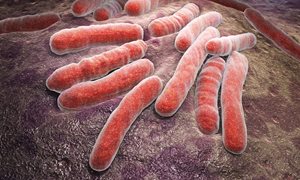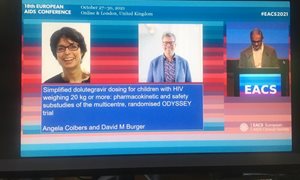 Research shows that the dye methylene blue is a safe antimalarial that kills malaria parasites at an unprecedented rate. Within two days, patients are cured of the disease and no longer transmit the parasite if they are bitten again by a mosquito. This discovery was made by an international team of researchers during a research project conducted in Mali. The results were published in The Lancet Infectious Diseases on February 6th.
Research shows that the dye methylene blue is a safe antimalarial that kills malaria parasites at an unprecedented rate. Within two days, patients are cured of the disease and no longer transmit the parasite if they are bitten again by a mosquito. This discovery was made by an international team of researchers during a research project conducted in Mali. The results were published in The Lancet Infectious Diseases on February 6th.
Effect after just 48 hours
The gametocytes can stay in a person’s body for several weeks following treatment for malaria. In the new study in Mali, researchers added methylene blue to the artemisinin-based combination therapy. Methylene blue is a blue dye that is used in laboratories to distinguish dead cells from living cells. Adding the dye to the antimalaria medicine ensured that patients no longer infected other mosquitos, within as little as 48 hours. Patients who were not given methylene blue were able to infect other mosquitos for at least a week. Researcher Teun Bousema (theme Infectious diseases and global health) coordinated the study together with the University of California (UCSF) and the Malaria Research and Training Center (MRTC). Bousema: “We noted that the male parasites disappeared from the bloodstream more quickly than the female parasites.”
Blue urine
Encouraged by the promising results of laboratory experiments, Bousema’s team has investigated for the first time the effect of methylene blue on the spread of malaria amongst humans. Bousema: “Methylene blue is very promising, because it can prevent the spread of malaria within such a short time following treatment. There are also indications that methylene blue also works well in species that are resistant to certain medicines.” The dye is safe and was tolerated well by patients. There is however just one awkward side effect: “I have used it myself, and it turns your urine bright blue. This is something that we need to solve, because it could stop people from using it.”
Malaria causes 430 000 deaths every year. Infection is caused by the bite of a malaria-carrying mosquito, and 90% of all deaths are in Africa, mostly amongst children. Malaria prevention focuses primarily on the use of mosquito nets, insecticides and medicine and, as a result, the number of deaths due to malaria has almost halved in the last ten years.
Publication:
Efficacy and safety of primaquine and methylene blue for prevention of Plasmodium falciparum transmission in Mali: a phase 2, single-blind, randomised controlled trial. The Lancet Infectious Diseases, 2018;
Alassane Dicko, Michelle E Roh, Halimatou Diawara, Almahamoudou Mahamar, Harouna M Soumare, Kjerstin Lanke, John Bradley, Koualy Sanogo, Daouda T Kone, Kalifa Diarra, Sekouba Keita, Djibrilla Issiaka, Sekou F Traore, Charles McCulloch, Will J R Stone, Jimee Hwang, Olaf Müller, Joelle M Brown, Vinay Srinivasan, Chris Drakeley, Roly Gosling, Ingrid Chen, Teun Bousema.
Teun Bousema
Related news items
.aspx?width=800&height=533&ext=.jpg&type=BlockColumn1Zoom1)
New test for Lyme disease is not reliable
15 June 2022 To determine whether someone has Lyme disease, doctors in the Netherlands often use antibody tests. For some time now, so-called cellular tests have been available on the market. However, the VICTORY study published in The Lancet Infectious Diseases has found that these tests are not reliable. go to page
With concerted effort, tuberculosis could be eradicated in 30 years time March 24th was World Tuberculosis Day
24 March 2022 Since 2020, the number of deaths from tuberculosis increased for the first time in a decade, caused by the COVID pandemic: fewer people had access to the right care on time. Some catching up is needed. go to page
NIH grant for follow-up research on tuberculous meningitis
10 February 2022Met subsidie van het Amerikaanse NIH gaat With a grant from the U.S. NIH, Reinout van Crevel will continue to unravel the disease process of tuberculous meningitis.
go to page
The European Hector Research Award in HIV 2021 awarded to Angela Colbers and David Burger
2 November 2021 On Friday 29 October 2021, during the 18th European AIDS Conference in London, the Hector Research Award for the best scientific article related to clinical or epidemiological HIV research was presented to Angela Colbers and David Burger, both working in the Pharmacy of the RadboudUMC. go to page

